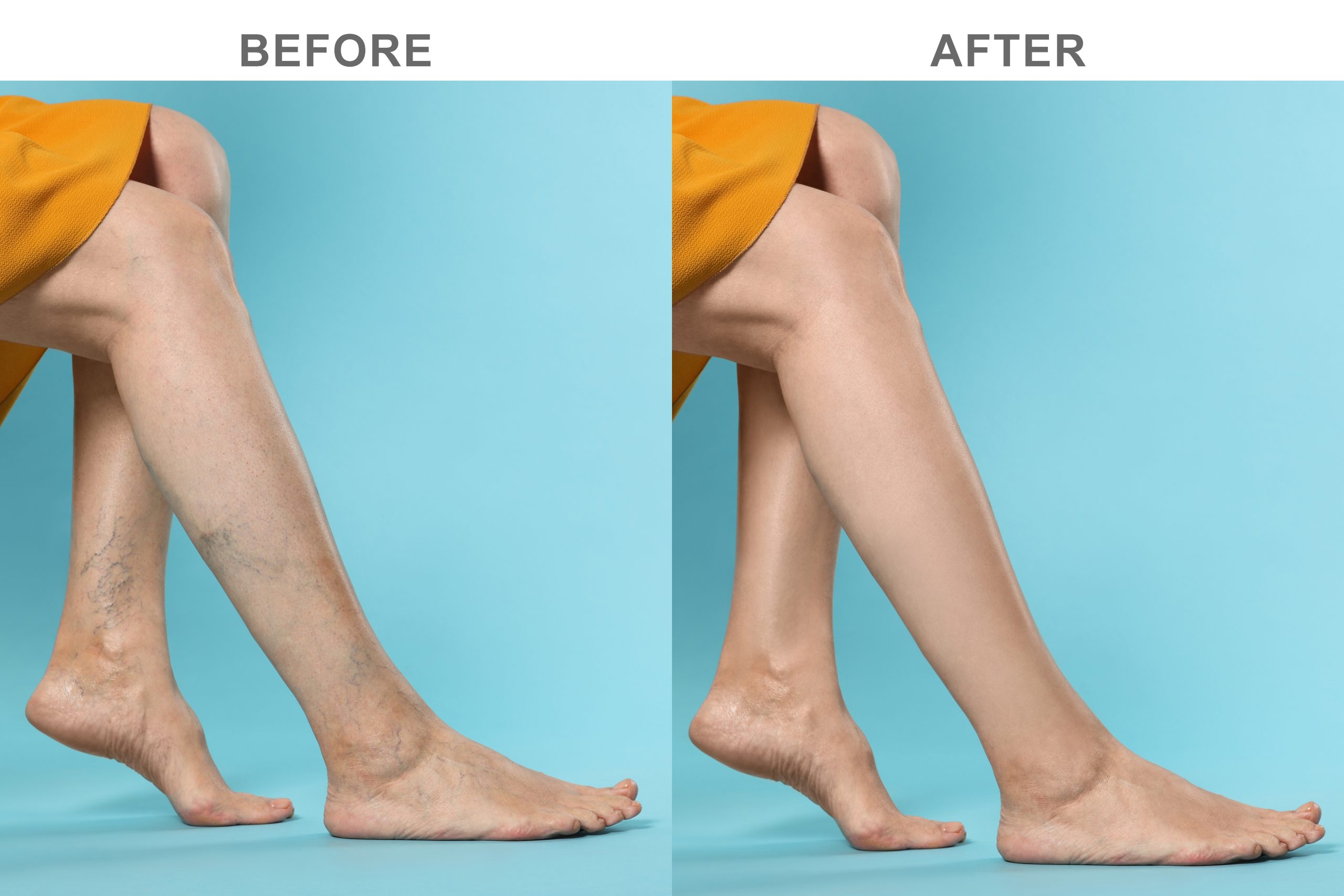Varicose Veins
DVT vs Normal Veins: Understanding the Key Differences

by admin
24th September 2024
4 minutes read
The health of your veins is vital for proper circulation and overall well-being. While most people have healthy, functioning veins, certain conditions like Deep Venous Thrombosis (DVT) can disrupt the flow of blood, leading to serious complications. In this article, we’ll explore the differences between DVT and normal veins, how to identify issues, and the importance of seeking timely medical care.
What Are Normal Veins?
In a healthy circulatory system, veins carry deoxygenated blood from various parts of the body back to the heart. The veins have small valves that ensure blood flows in the correct direction, preventing it from pooling in any part of the body. When functioning normally, veins support healthy blood circulation, maintain stable blood pressure, and help oxygen and nutrients reach all areas of the body.
What is Deep Venous Thrombosis (DVT)?
Deep Venous Thrombosis (DVT) occurs when a blood clot forms in a deep vein, typically in the legs. This condition can cause pain, swelling, and other serious complications if left untreated. Unlike normal veins that allow for smooth, unimpeded blood flow, DVT causes a blockage in the vein, disrupting circulation. The most serious complication of DVT is a pulmonary embolism, which can happen if the blood clot travels to the lungs, becoming life-threatening.
Key Differences Between DVT and Normal Veins
- Blood Flow:
- Normal veins: Blood flows smoothly from the veins back to the heart, with the help of one-way valves that prevent backflow.
- DVT: A blood clot forms in the deep vein, partially or completely blocking blood flow, which can lead to swelling and pain.
- Symptoms:
- Normal veins: No discomfort or visible changes.
- DVT: Symptoms include sudden swelling in one leg, pain or tenderness, redness, warmth, and, in severe cases, difficulty breathing if a pulmonary embolism occurs.
- Complications:
- Normal veins: When veins function properly, they do not cause any health issues.
- DVT: If left untreated, DVT can lead to pulmonary embolism, a life-threatening condition where the clot travels to the lungs.
What Causes DVT?
Unlike normal veins, where blood flows freely, DVT develops due to certain factors that slow or obstruct blood flow. Some common causes of DVT include:
- Prolonged immobility: Sitting for long periods (e.g., during long flights or car rides) can slow blood flow, leading to clot formation.
- Surgery or injury: Surgeries, especially on the legs, can damage veins or reduce mobility, increasing the risk of DVT.
- Medical conditions: Conditions that affect how your blood clots, such as thrombophilia or cancer, can raise the risk of DVT.
- Pregnancy or hormone therapy: Hormonal changes can increase the risk of clotting.
- Obesity: Excess weight can put pressure on the veins, leading to poor circulation.
How to Prevent DVT and Maintain Healthy Veins
Keeping your veins healthy and preventing DVT involves adopting certain lifestyle changes and being mindful of your risk factors:
- Exercise regularly: Physical activity promotes healthy blood flow and helps prevent the formation of clots.
- Stay hydrated: Proper hydration keeps your blood flowing smoothly.
- Avoid prolonged immobility: Stand up and move around frequently, especially during long periods of sitting or lying down.
- Wear compression stockings: If you’re at risk for DVT, compression stockings can help improve circulation and prevent clot formation.
- Maintain a healthy weight: Reducing excess weight helps prevent unnecessary pressure on your veins.
Treatment Options for DVT
If you suspect you have DVT, it’s crucial to seek medical attention immediately. DVT is typically treated with blood-thinning medications to prevent further clotting, or in some cases, clot removal procedures. Medfin provides advanced treatments for DVT, helping patients prevent complications and manage their condition effectively.
Why Choose Medfin for DVT Treatment?
At Medfin, our expert team provides comprehensive care for vein-related issues, including DVT. Our specialists will assess your condition, recommend the most appropriate treatment, and offer personalized care to ensure the best possible outcomes. Whether you’re experiencing symptoms of DVT or need advice on maintaining healthy veins, Medfin is here to guide you every step of the way.
Conclusion
While normal veins function properly to ensure smooth blood circulation, DVT disrupts this flow, leading to potential health risks. Recognizing the signs of DVT and seeking early treatment can prevent life-threatening complications. If you’re concerned about your vein health or suspect DVT, consult the specialists at Medfin for expert diagnosis and treatment
CATEGORIES
- ACL Reconstruction
- Anal Fissures
- Anal Fistula
- Appendicitis
- ASK A DOCTOR
- Benign Prostatic Hyperplasia
- Breast Lump Excision
- Cataract
- Circumcision
- Conditions & Diseases
- Cosmetology
- Covid-19
- Cure
- Endocrinology
- ENGLISH VIDEOS
- Eye Care
- Gallstones
- General Surgeries
- Government Schemes
- Gynaecology
- Gynecomastia
- Health
- Health Insurance
- Hernia
- Hindi
- Hip Arthoscopy
- Hip Replacement
- Hip Replacement Surgery
- Hydrocele
- Kannada
- Kidney Stones
- Knee Arthroscopic
- Laparoscopic
- LASER
- Latest Treatments
- Lifestyle
- Liposuction
- Medfin Stories
- Medicine
- Nephrology
- Ophthalmology
- Orthopaedic
- Paraphimosis
- Patient Testimonials
- PCL Reconstruction
- Phimosis
- Piles (Hemorrhoids)
- Pilonidal Sinus
- Proctology
- Prostate Artery Embolization
- Rhinoplasty
- Second Opinion
- Total Knee Replacement
- Urology
- Uterine Artery Embolization
- Uterine Fibroids
- Varicocele
- Varicose Veins
- Vascular
- VIDEOS






